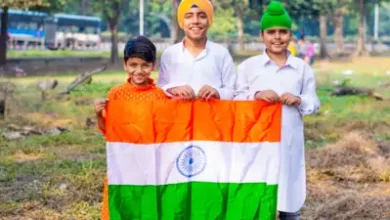In a Konkani kitchen, what is being cooked
When Archana Pai first developed a liking for cooking, she was around twelve years old. Her mother and grandmother were the cupids; they used to prepare delicious meals that included almost every portion of the vegetable or fruit but with less seasonings. “I was captivated by the way my mother and grandmother mixed the spices. We often use very little spice in our cuisine, but the results are usually exquisite,” she explains. And with that, she extends an invitation for us to join her in her Konkani kitchen as she and executive chef Mothi prepare a feast for the people of Chennai at the Samudra restaurant at Trident.

At the Amchigele Konkan festival, cozy vegetarian and non-vegetarian meals will be served a la carte and in thalis. According to Archana, Konkani food is more about sustainable cooking, where even the peels of vegetables are not thrown but instead are turned into chutneys or fries. This less-known cuisine mostly consists of no onion or garlic. Pumpkins and ash gourds have some meat that is thrown along with the skin when they are sliced. Our forefathers discovered that the peels contain micronutrients that improve digestive health, increase magnesium absorption, and provide all the trace amounts of vitamins and minerals required by the body.
From coast to shore
Chennaiites may sample a new meal that is completely different from Tamil food, from pickles and raitas to main dish and dessert. Even though the food is mostly vegetarian, there are fish-based non-vegetarian treats available. The chief of this society that resided in coastal regions once said you can survive with food from the sea, Archana says, sharing a narrative of how the Konkanis came to appreciate the water and express their thanks by eating fish. Seafood and fish are sometimes referred to as “flowers from the seas.” Because of this, the majority of our community was able to endure the famine without going hungry, which is why we continue to pray and do puja for fish and the sea. It is customary in Mangaluru to prepare fish on the eve of Diwali as a gesture of gratitude to the sea gods for rescuing the town during a famine. Crabs, prawns, sardines, and kingfish are among the varieties that are employed. Cooking is Archana’s passion, but she got lost in the daily grind. She gave her first love another opportunity after the epidemic. “I like cooking and feeding guests when I have them around. Upon tasting my food, a few acquaintances who are also cooks told me that this cuisine should be made public, the chef adds.
Archana claims that Konkani food is gentle on the stomach and doesn’t produce bloating or acidity. Few people have shared the recipes or ingredients outside of the group, where they are securely kept. People may have been hesitant to sample the food because of the lack of onions and garlic in some of its recipes, according to Archana.
Archana mentions that Konkani meals are comparable to those of Jain cuisine, citing chef Vikas Khanna’s interview in which he discusses the healthfulness of Jain food, which excludes onions and garlic. “I want to step in and show people that food can still be tasty without onions and garlic; you can eat to fill up your stomach and still feel very light on your stomach,” she explains. She adds that onions and garlic are also not often used in the cooking of seafood.
Maintain and Make Popular
In October, Archana hosted a culinary festival at Trident, Kochi. After the triumph, she received an invitation to Chennai. She found long-lost recipes while arranging meals. Shimpya Kheeri is among them. Shimpy means shell in English. The shells for this delicacy are composed of dry crushed coconut and rice flour. Form the balls, flatten them, boil them in water, and then mix in the coconut milk and jaggery. It’s a laborious procedure, so very few people do it these days,” she says.
A favorite among Konkanis is pathroda. The dish’s specialty is a slow-fired, steam-cooked batter enclosed in colocasia leaves. The whole bundle has to be cooked, thus the cooking process takes one to one and a half hours. You will experience itching if it is not cooked through. She says, “You need to slow cook it to get the whole itchy feeling out,” and mentions that Samudra serves this.
Goli bajje, hittu, valval, soi bhajil ghassi, dali thoi, bibbya upkeri, palya polo, sungta ghassi, pedvya phanna upper, kurlo thadsayilo, and other items are also available on the menu. “This mixed vegetable pickle, which is prepared just as my grandmother used to, is made with cauliflower, ivy gourd, carrot, and lemon. Neither vinegar nor preservatives are included. It is prepared and served freshly,” she says.
According to Archana, because Konkani cuisine utilizes a lot of water and often cooks vegetables in their own water, it is typically slow cooking. Soups and gravies are created from the water used, primarily for cooking dals. Coconut and coconut milk serve as the foundation for the majority of the cuisine’s recipes. They utilize tamarind, kokum peels, amla, mango, or lemon for sourness, along with jeera and asafoetida. The meals also include various kinds of leaves and plants. Idli wrapped in a jackfruit leaf is called hittu. To build the baskets, the leaves are weaved together using poles made of palm or coconut leaves. She continues, “Add batter to it and make idlis. I brought all the leaves and some other ingredients from my hometown, Kochi, like starfruit.”
How and where is it sustainable?
Archana notes that sustainability is something that our predecessors have long practiced, even in this day and age when it is being emphasized. “It is my belief that by adopting sustainable cooking practices, any home can reduce waste, protect the environment, and maximize the use of available resources. There’s not much to compost when you visit a Konkani residence. We even turn the skins from cucumbers into chutney, and we turn the seeds and core of pumpkins into chips and chutneys. She states that “potato peels are marinated or sun-dried and deep-fried right away.” Archana leaves us to ponder as she returns to make the Konkan specialties for Chennai Makkal.
“Eat properly and use food as medicine, my grandmother would constantly advise. You won’t need to eat medication as food if you consume food as medicine. I’m returning to my origins now in an effort to preserve the customs and educate the next generation about kitchen chemistry, which can help you become stronger, more resilient, and have more endurance.







